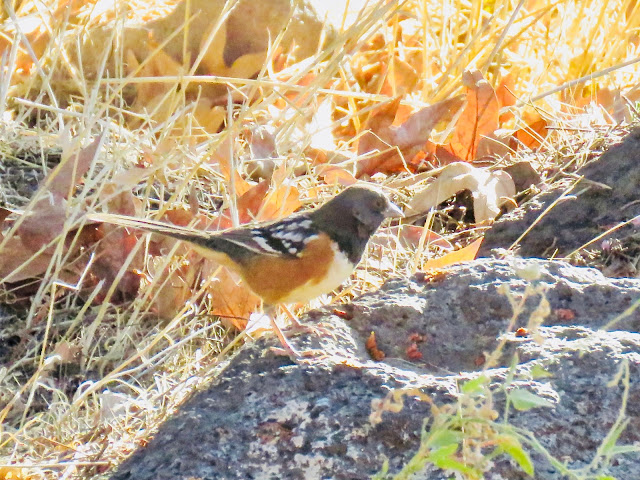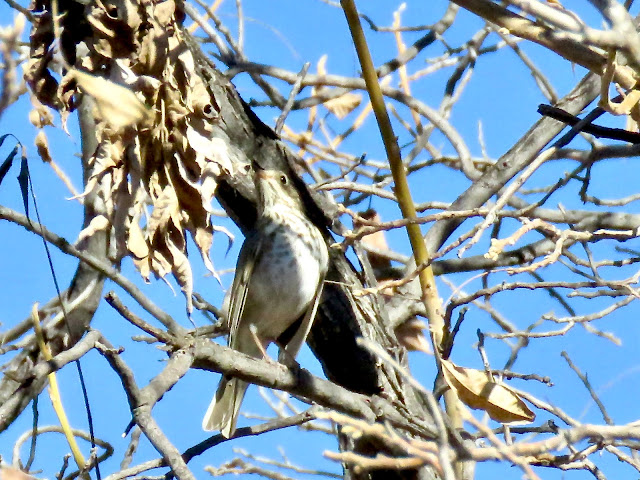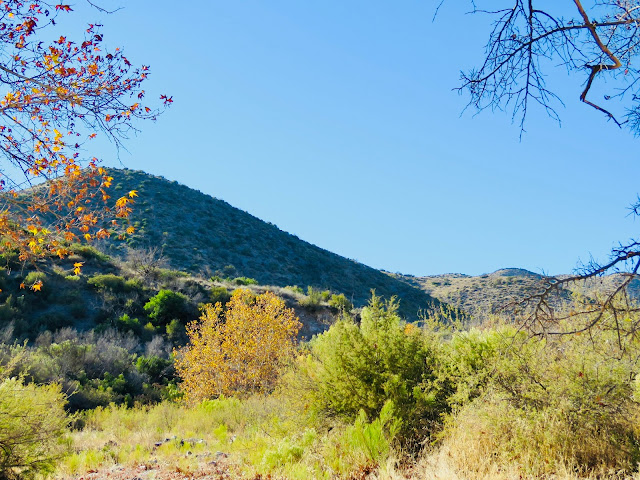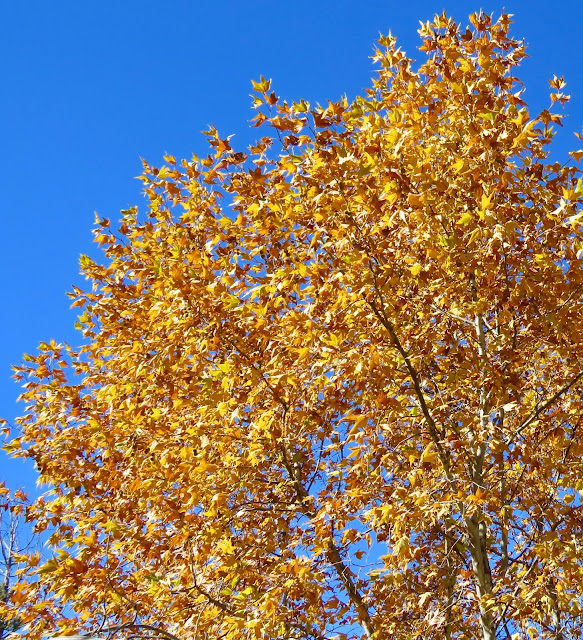With the car's outside temperature registering 39°F with no sun yet reaching Rackensack Canyon, Jeanne Burns decided we should continue on up the dirt road to Seven Springs Recreation Area, catching the canyon on our return. This is one of my favorite locations to visit; it's beautiful. On some days, the birds are really good, too.
 |
| Road leading up to Seven Springs Recreation Area beyond Rackensack Canyon |
In the grasses behind the first rest area, we saw HOUSE WREN, WHITE-CROWNED SPARROWs, BLACK-THROATED SPARROWs, a LARK SPARROW and a handful of OREGON DARK-EYED JUNCOs.
As we approached our desination (Seven Springs Campground), I spotted a LOGGERHEAD SHRIKE out in the distance. Jeanne stopped and took this photo of it in a mesquite.
The chatter of JUNIPER TITMOUSE caught our immediate attention when we reached the campground. Not an easy bird to come upon for us desert dwellers! We were thrilled it gave us the chance to watch its behavior.
 |
| Jeanne caught this double-bird photo: Juniper Titmouse bottom; Ruby-crowned Kinglet above it |
Although we were surrounded with bird song, a thrasher's song from up on the hillside reached us, too. We called it down -- a SAGE THRASHER!
PHAINOPEPLA were here, too. Perching out in the open, as flycatchers do, this female gave me a photo op before she sallied forth for a morning snack.
Scampering around the picnic tables and foraging on the ground were DARK-EYED JUNCO, WHITE-CROWNED SPARROW and SPOTTED TOWHEE.
Not on the ground was a HERMIT THRUSH, not skulking around as usual but perched in the denseness of a tree.
Finding a sycamore tree trunk full of sapsucker holes, we waited a short distance away to see who was using it. While we waited, a NORTHERN CARDINAL showed itself. Male in full view; female hidden as she works the berries.
A RED-NAPED SAPSUCKER showed up at "its" tree full of holes and continued tapping it.
When it left, a RUBY-CROWNED KINGLET flew in to check the holes for any insects that may have gotten trapped in the sap of previous holes.
Still planning to stop at Rackensack Canyon on our way out of the area, we managed to pull ourselves away from the rich experience at the campground.
Near a residence on the way back down, we heard and spotted a couple BRIDLED TITMOUSE.
Then, we were back at Rackensack.
Here, we spotted a RED-TAILED HAWK overhead, WOODHOUSE'S SCRUB JAY moving from juniper to juniper and more familiar desert birds: BLACK-TAILED GNATCATCHER, VERDIN, RUFOUS-CROWNED SPARROW and CANYON TOWHEE.
Another very good adventure in the field.
* * *
Click on the links below to see entire list for each location:
View this checklist online at http://ebird.org/ebird/view/checklist/S41109149
View this checklist online at http://ebird.org/ebird/view/checklist/S41109644




















What a beautiful day out!!! Really love love the Juniper Titmouse shots!
ReplyDeleteThanks, Chris. It was very quiet and peaceful out there.
ReplyDeleteanother great blog. A wonderful list/photos of so many birds that can be found (if you know where to look). Enjoyed the read very much.
ReplyDelete